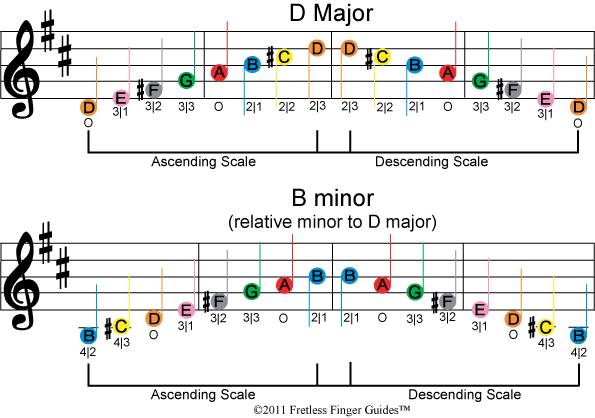
For instance, with first position scales on the violin, the keys of G, D, and A major make a lot of sense. You’ll notice certain key signatures make more sense in certain positions.

If you need help reviewing how to read violin music, visit our Reading Violin Music section.If you are starting to learn third position then it’s time to start practicing third position scales on the violin. Visit our Fingering Tape section for finger placement assistance. When fingering violin music, there will be times when it will be easier to use your 4th finger instead of an open string.įingerboard confusion? Having trouble remembering where to place your fingers on the fingerboard? Many beginning violinists use fingering tape as a temporary aid to help them place their fingers on the violin fingerboard.

Does your 4th finger on the D string sound the same pitch as your open A? They should match. The pitch of the note should be the same. Coming down the D scale, you’re given two choices to play A: a green 0, no fingers, for open A, or, 4th finger on the D string. Violin Lesson #3, Finger Patterns, will demonstrate some of these variations.Ĥth finger or open string? It’s your choice! Notice how when you’re going up the D scale, open A is shown with a green 0 for open A (no fingers on the string). Even though the D, G and A scales being used as examples in this lesson have a half step between the 2nd and 3rd finger, other scales have different half steps and whole steps between the notes. See how the image of the hand shows the 2nd and 3rd fingers are right next to each other? The image of the hand also shows the 1st and 2nd fingers aren’t touching – these notes have a whole step between them. Notice how there’s a “V” shape connecting the 2nd and 3rd fingering numbers? That means the second and third finger are right next to each other – the notes are a half step away.

Play D Major Scale D Major Scale with Fingering


 0 kommentar(er)
0 kommentar(er)
